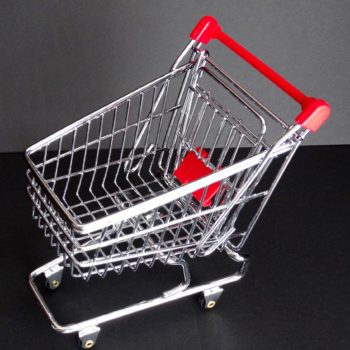What Marketers Should Know About Programmatic Ad Buying in 2017
by Lindsay Rowntree on 11th Jan 2017 in News

2016 saw some powerful new trends begin to emerge for programmatic marketers, presenting both new opportunities and obstacles. While data continues to be the cornerstone of transacting programmatically, most buyers are still too reliant on commoditised third-party data and need to do a better job utilising it. Programmatic creative became a popular topic this year; but, in reality, it was not being utilised at scale even though the enabling technology was (and is) available. Ad tech has created an abundance of new vendor solutions that provide valuable services, but the continued addition of these middlemen has exposed the unimaginable costs and lack of transparency in buying (and selling) programmatically. So, with 2016 coming to an end and programmatic projected to increase from USD$19bn (£14bn) this year to USD$42bn (£28.7bn) in 2020, explains George Levin (pictured below), CEO, GetIntent to ExchangeWire, here's what some important key trends might be in 2017.
Improving the usage of data
We continue to progress with our use of data to target the correct audience at the perfect time, but we need to do better. Developing and understanding marketers’ first-party data is a start, but it is also important that sellers also endeavour to achieve this with their own first-party data in order to fully take advantage of the promise of private deals executed via Deal IDs (which currently represents less than 20% of programmatic spend). This truth-of-the-matter way of one-to-one programmatic trading has been somewhat of a bust to date. This is primarily because buyers have a specific audience that they want to reach across a publisher’s inventory, but upon execution of a campaign they often just don’t find their target users and the campaign doesn’t fulfil – a waste of time and effort. A key component to making this work from here on in is for publishers to continue to focus on building out their first-party DMP solutions, bringing in not only cookie-based/user ID-based data, but also subscription, e-commerce, etc. The continuing development of sell-side DMPs will be a big trend in 2017; and buyers can take full advantage of this by better regulating their data with these publishers’ users, greasing the wheels for PMP success.
What to know about programmatic creative

George Levin, CEO, GetIntent
There has been a lot of discourse about the promise of programmatic creative and how it will allow brands to use data and dynamic creative to tell a rare story to an individual or a segment of users, in real time, and at scale. However, the reality is that this has not yet been put into practice adequately. The technology is substantially there, so what is preventing us from taking advantage of this powerful new opportunity? To me, the number-one reason is a legacy structural hindrance that needs to be addressed at the agency level. Creative and media have historically operated independently, with creative starting the process with marketers before handing over a completed product to their media counterparts to execute campaigns. Compounding the disconnect, it is not unusual that the creative and media teams are not part of the equal holding company. For programmatic creative to be successful, agencies need to take down the walls between creative, data, and media planning, and to upend the process so that these stakeholders are working together from day one. Although an intimidating challenge, the opportunity is so great that I still see this as a key trend moving into 2017. However, marketers who want to successfully take advantage of this instrument will need to apply significant pressure to their existing agency partners to adjust their approach and/or find new skillful partners who can provide an environment where these silos don’t exist.
Why you should bring your ad tech in-house
Initially, we had two intermediaries that facilitated programmatic buying: DSPs and SSPs, each taking a percentage of spend. Today, we have added a surplus of ad tech vendors that are contributing value in different ways. Each of these middlemen take a piece, not only expanding costs, but also opacity. This lack of transparency has been a point of contention for some time, but really came to a head this October when The Guardian announced that they were receiving as little as USD$0.30 for every USD$1.00 of media spent on their properties. Conversely, this disclosed that marketers could be seeing as little as 30% of their working media expenditures going to the actual cost of media. This is clearly not sustainable. So, what are intelligent marketers doing about it? To start, some large marketers have brought their media buying in-house, eradicating agency media buying costs. Many digital-only brands with built-in digital expertise and loads of valuable, internet-ready first-party data have not only taken this approach, but have gone a step further by deploying in-house ad tech solutions. This presents numerous benefits, including:
- Condensing the ad tech tax by excluding certain middlemen
- Increasing transparency and control by facilitating more direct relationships with publishers
- Compressing data leakage by actually hosting data management solutions and not supplying data to a variety of third-party vendors
- The marketer, or agency, now has a particular and differentiated solution, customised to their needs
This, too, might seem intimidating, as it could cost a marketer or agency millions of dollars and years to build a DSP from the ground up. And, of course, there are questions about the prospect of becoming a technology company when you do not have the expertise, or will, to do so. But there are feasible solutions and partners out there that can carry the load of providing technical expertise, development, and maintenance, helping trim down costs and speeding up time to market.








Follow ExchangeWire